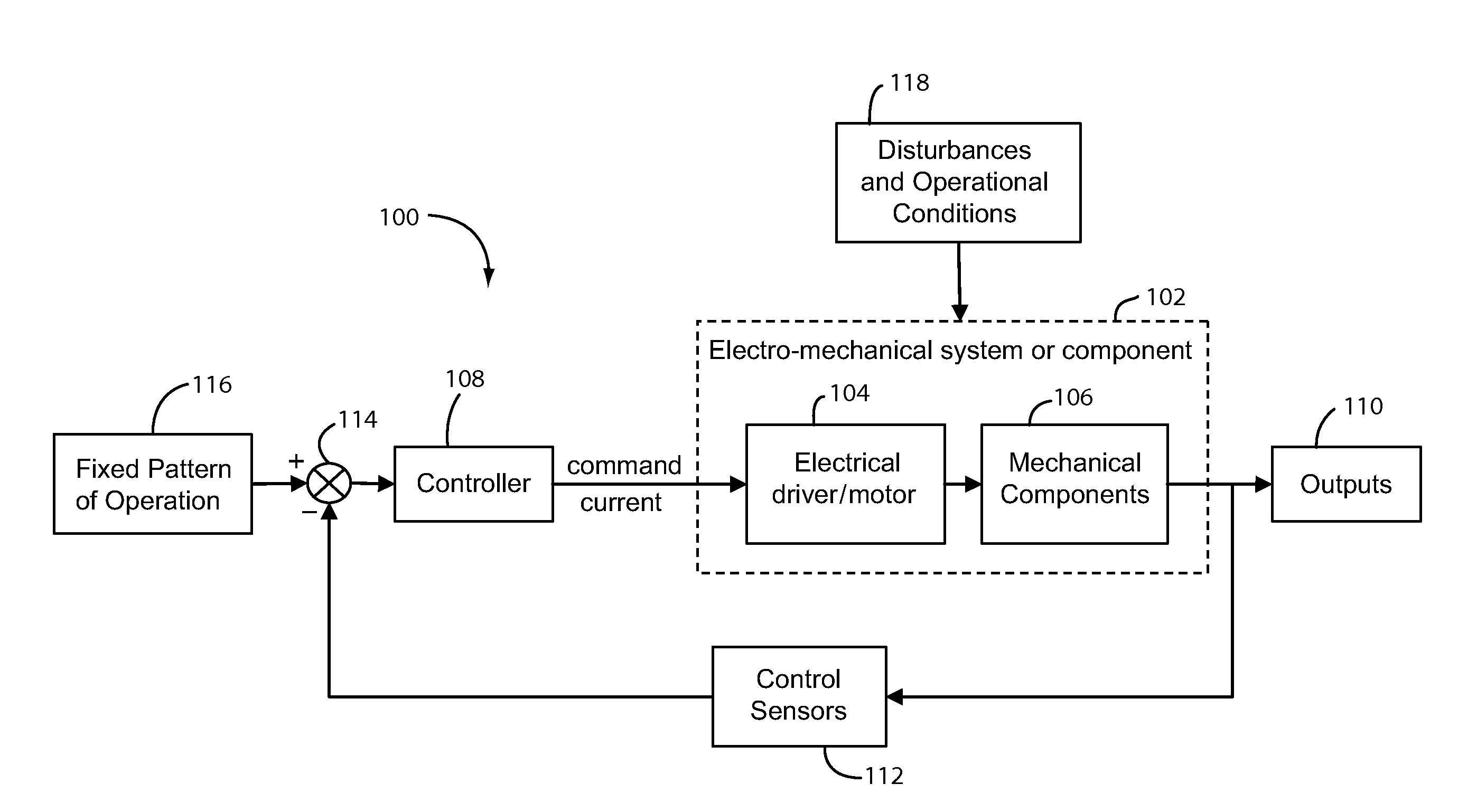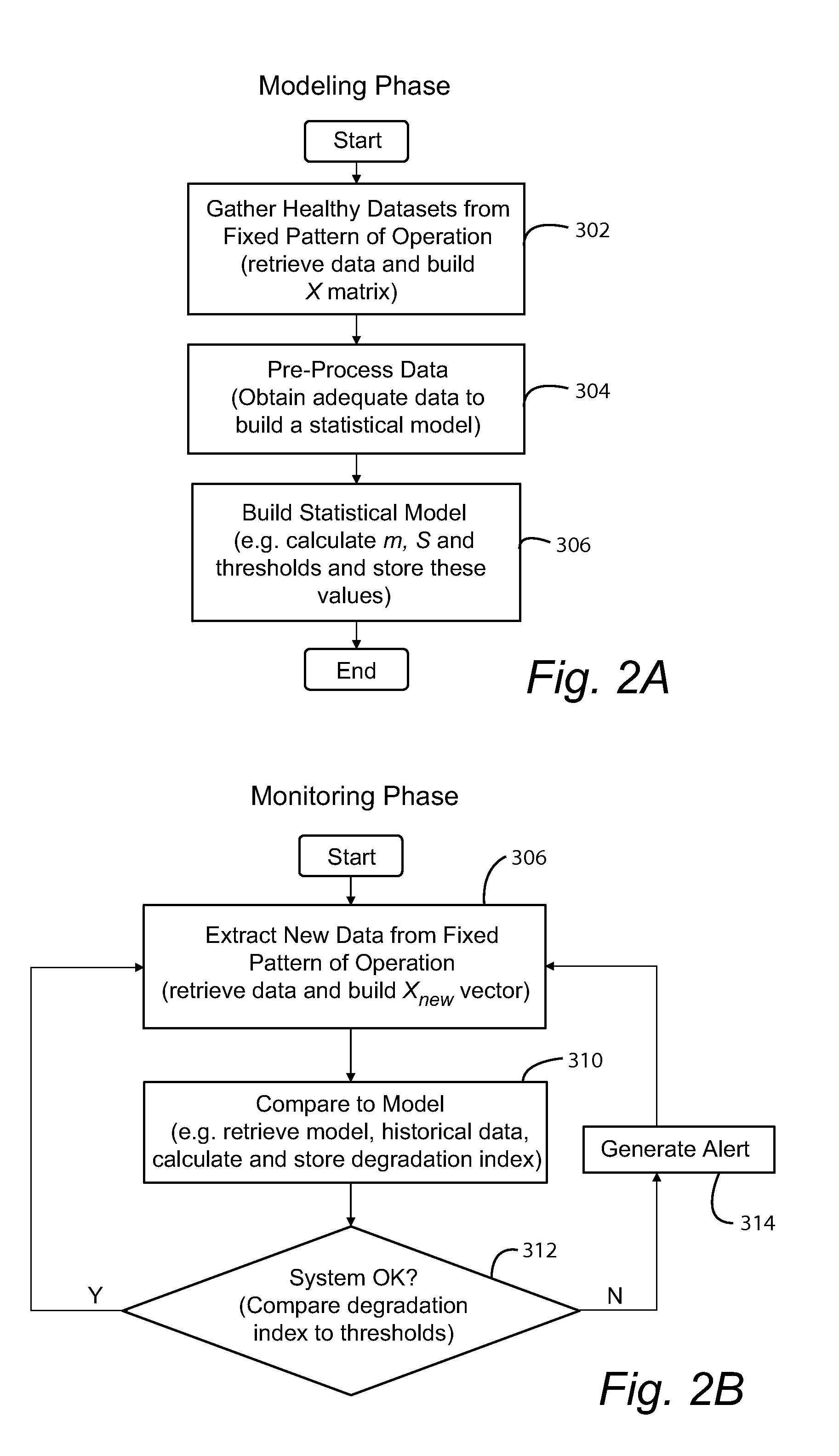Prognostics and health monitoring for electro-mechanical systems and components
- Summary
- Abstract
- Description
- Claims
- Application Information
AI Technical Summary
Benefits of technology
Problems solved by technology
Method used
Image
Examples
example database use and manipulation
[0068]The various methods described are based on data measured by sensors onboard an aircraft in the described preferred embodiment. The processing arrangement shown in FIG. 11 describes an exemplary illustrative non-limiting process of getting the sensor data from on board the aircraft and its insertion at a database. Data pre-processed onboard the aircraft may also be included on the transmission. First, the airplane arrives at the airport and the sensor information is transferred to the processing station. These transferring processes can be either manual or automatic. This data is inserted at a database located at a ground station. This process may repeat at each aircraft landing or any other desired times.
[0069]The exemplary illustrative processing arrangement shown in FIG. 12 describes the process of manipulating the sensors data from the database which is the same as in FIG. 11. This process can be independent from the one presented on FIG. 11 and can run continuously. The fi...
PUM
 Login to View More
Login to View More Abstract
Description
Claims
Application Information
 Login to View More
Login to View More - R&D
- Intellectual Property
- Life Sciences
- Materials
- Tech Scout
- Unparalleled Data Quality
- Higher Quality Content
- 60% Fewer Hallucinations
Browse by: Latest US Patents, China's latest patents, Technical Efficacy Thesaurus, Application Domain, Technology Topic, Popular Technical Reports.
© 2025 PatSnap. All rights reserved.Legal|Privacy policy|Modern Slavery Act Transparency Statement|Sitemap|About US| Contact US: help@patsnap.com



